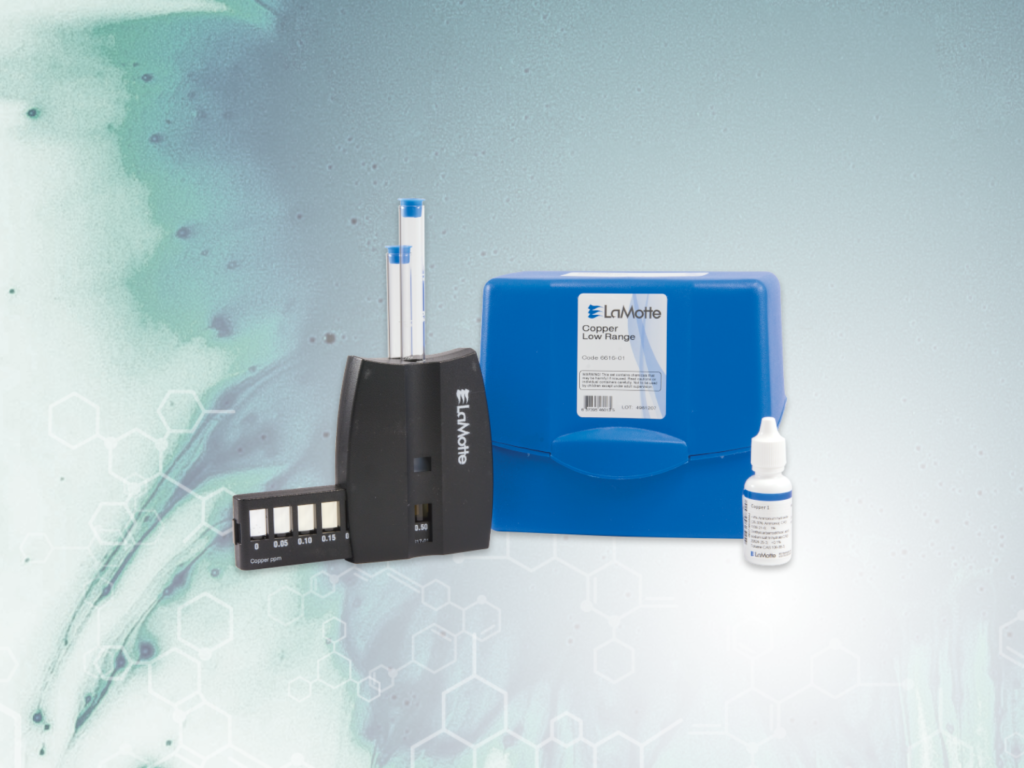Water quality analysis is crucial for ensuring safe and healthy water for various purposes, from drinking to industrial processes. Among the many parameters tested for water quality, copper levels are particularly important to monitor due to its potential harmful effects on both human health and the environment. Lamotte offers comprehensive solutions for copper testing, including the Copper Test Kit and Copper Test Paper, providing accurate and efficient methods for water quality analysis.
Understanding the Lamotte Copper Test Kit:
The Lamotte Copper Test Kit is designed to accurately measure copper levels in water samples. One of its key features is the Low Range Comparator, which enables precise color matching for accurate results. By using the Low Range Comparator, extremely faint colors can be matched to color standards by viewing the reaction down the length of the tube, thereby increasing the path length by ten times compared to traditional comparators. This enhances the sensitivity of the test, allowing for precise determination of copper concentrations.
Procedure Using the Low Range Comparator:
- Setup: Begin by sliding the Copper Low Range Comparator Bar into the Low Range Comparator Viewer. Fill a test tube to the 10 mL line with the untreated sample water and insert it into the rear hole on the top of the Low Range Comparator.
- Test Preparation: Fill another test tube with sample water and follow the test procedure. After adding the necessary reagents, remove the cap from the test tube and insert it into the front hole on the top of the Low Range Comparator.
- Color Matching: Position the comparator so that light shines down through the test tubes. Tilt the comparator until the color standards and sample are illuminated. Match the color of the reaction to the color standards and read the result from the Low Range Comparator Bar.
Interpreting Results:
The color of the reaction in the test tube should be matched to the corresponding color standard provided with the kit. The result is recorded as ppm (parts per million) of copper in the sample. If the sample’s color is darker than the 0.5 ppm color standard, it needs to be diluted and retested. The dilution process involves adding distilled or deionized water to the sample and multiplying the reading by 10 for accurate ppm determination.
Utilizing Copper Test Paper:
In addition to the Copper Test Kit, Lamotte offers Copper Test Paper, providing a quick and easy method for detecting copper ions (Cu2+) in water samples. This paper is specific for Cu2+ and offers a straightforward procedure for detecting the presence of copper.
Directions for Use:
To use the Copper Test Paper, apply a drop of the neutral or weakly acid (pH 3-7) test solution to the paper. In the presence of Cu2+, a green spot appears on the paper. The intensity of the green spot correlates with the concentration of copper in the sample. Small quantities of copper produce a small green ring on the paper, allowing for visual detection of copper presence.
Storage and Specific Recommendations:
It is essential to store Copper Test Paper in a cool, dry place away from sunlight and moisture to maintain its effectiveness. Additionally, for specific applications such as detecting copper on surfaces or in alloys, Lamotte recommends using Cuprotesmo test paper, which offers high sensitivity and specificity for detecting copper traces.
Water quality analysis is a critical aspect of environmental monitoring and public health protection. Lamotte’s Copper Test Kit and Copper Test Paper provide reliable and efficient solutions for accurately measuring copper levels in water samples. Whether conducting routine water quality assessments or investigating potential contamination incidents, these tools enable users to detect and quantify copper concentrations with precision and ease. By implementing these testing methods, stakeholders can ensure the safety and integrity of water resources for various applications.

